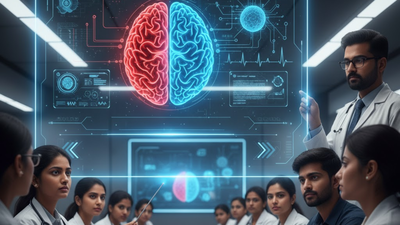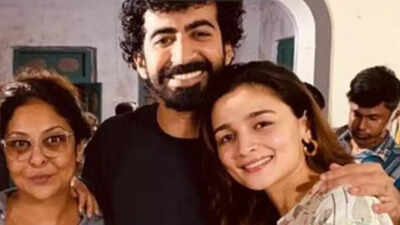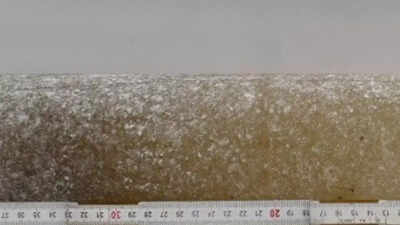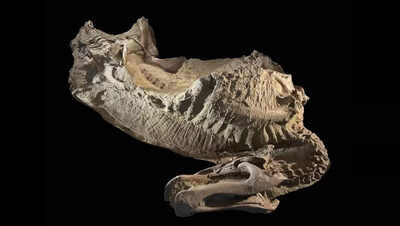Experts warn of rising stroke cases among young Indians, urge AI-enabled screening for early detection

NEW DELHI: As India observes World Stroke Day, medical experts have sounded alarm over a worrying rise in stroke cases among younger adults, warning that the disease is no longer confined to the elderly.At the World Stroke Day forum organised by Mahajan Imaging and Labs on Wednesday, experts emphasized how AI-enabled, integrated pathology and imaging systems are transforming stroke diagnosis and management, making it possible to detect and treat strokes faster, and even prevent them before symptoms appear.India’s stroke crisis is worsening, with new findings published in the International Journal of Stroke (IJS), revealing that the country records nearly 1.5 million stroke cases every year, yet only one in four Indians has access to a stroke-ready hospital.The study highlights a significant gap in emergency preparedness.Experts noted that the rise in cases among people in their thirties and forties is driven by stress, hypertension, sedentary lifestyles, and chronic exposure to air pollution, underscoring an urgent need for AI-enabled, preventive, and integrated stroke care systems.Dr MV Padma Srivastava, chairperson of Neurology at Paras Health, Gurugram, and former Professor and Head of Neurology at AIIMS, New Delhi, said that environmental and lifestyle factors are now major contributors to the rising stroke burden, particularly among younger adults.Chronic exposure to fine particulate matter (PM2.5), for instance, is known to trigger inflammation and vascular damage, significantly heightening the risk of ischemic stroke.“In cities like Delhi, where PM2.5 levels are often 10- 15 times higher than WHO-recommended limits, individuals with hypertension, diabetes, or pre-existing heart disease face an even greater risk. This makes preventive screening and early diagnosis more critical than ever. Equally important is timely treatment, reaching a stroke-ready centre within the ‘golden hour’ can dramatically improve recovery and functional outcomes,” Dr Srivastava said.“With advances in clot-busting drugs, mechanical thrombectomy, and AI-enabled imaging that helps identify salvageable brain tissue, outcomes today are far better than a decade ago. However, these benefits depend on awareness, rapid response, and integrated care pathways that bridge emergency, neurology, and rehabilitation services,” she stated.The profile of a stroke patient has changed dramatically in the last decade, said Dr Harsh Mahajan, founder and managing director, Mahajan Imaging and Labs.“We are seeing strokes in younger, otherwise healthy adults, often triggered by high stress, poor sleep, uncontrolled hypertension, and prolonged exposure to air pollution. The key is to act before a stroke occurs, and that’s where AI-driven diagnostics and integrated lab-imaging models are making a real difference,” he said.Dr. Mahajan further explained that AI-powered imaging platforms now assist radiologists in identifying subtle clots, vessel blockages, or microbleeds that can be missed on early scans.“When advanced CT, MRI, and diffusion-weighted imaging are combined with AI models trained on large datasets, interpretation time reduces and diagnostic accuracy improves,” he said.Indian scientists and doctors have been at the forefront in finding solutions for early and accurate diagnosis of stroke using artificial intelligence, he said.The first publication on AI in the prestigious medical journal The Lancet was in October 2018, authored by Qure.ai and Mahajan Imaging and Labs, on AI-based automated diagnosis and report generation from head CT scans in patients with hemorrhagic stroke, a revolutionary step in applying AI to the diagnosis of critical illnesses, Dr. Mahajan said.“It was a proud moment for India when the health-tech startup Qure.ai published this landmark paper, demonstrating deep-learning algorithms for detecting critical findings in head CT scans, a milestone that highlighted the nation’s growing leadership in medical AI. More such collaborative research and innovation are essential to ensure faster and more accurate diagnosis in critical conditions,” he said.On the laboratory side, specialists highlighted how pathology is equally crucial in decoding the clot.Advanced tests such as D-dimer, PT/INR, fibrinogen levels, lipid subfraction analysis, and genetic marker screening help determine who is predisposed to stroke or at risk of recurrence. Blood biomarkers like Glial Fibrillary Acidic Protein (GFAP) and Neurofilament Light Chain (NfL) can even detect neuronal injury within hours of onset, enabling faster and more precise interventions.Dr Shelly Mahajan, Lab Director, Mahajan Imaging and Labs explained, “Our approach combines real-time pathology with imaging to create a complete diagnostic map for each patient. We can now deliver coagulation and biomarker results within 45 minutes, critical information that enables neurologists to decide on thrombolysis or surgical intervention without delay.“This integration of laboratory analytics with advanced imaging is not just improving precision; it is redefining the speed and quality of stroke care across institutions.” The event concluded with a strong call to shift from reactive treatment to preventive, patient-centric stroke care driven by early detection and continuous monitoring.Experts urged that screening for blood pressure, cholesterol, coagulation factors, and blood sugar become as routine as annual check-ups, especially for those with sedentary lifestyles, high stress, or a family history of heart disease.They further stressed the need to assess homocysteine and C-reactive protein (CRP) levels, which can reveal vascular stress long before symptoms appear.On World Stroke Day 2025, doctors reiterated that India’s stroke response must evolve beyond emergency care to data-led prevention, powered by AI-driven imaging, advanced pathology, and faster clinical decision systems, a public health necessity capable of reducing disability and mortality rates by measurable margins.






